Breast Health: Tips for Maintaining Well-being at Every Age
The breasts are a pair of organs located on both sides of the chest; between the 2nd and 6th rib. The breast is an essential organ in the human body, providing essential nutrition to infants and playing an important role in female identity and sexuality. The breast also has a major role in the reproductive system, helping to regulate hormones and producing milk for lactation. Anatomically, the breast consists of glandular and fatty tissue, and can be affected by a range of medical conditions. Breast health is an important part of overall health, and breast cancer is one of the most common types of cancer in women. Regular screenings and self-exams are important for maintaining breast health. Please keep reading for details on the following topics:
Overview of the breasts
Composition of the breast
Breast conditions
Breast cancer
Breast cyst
Breast fibroadenoma
Fibrocystic breast disease
Intraductal papilloma
Mastitis
Gynecomastia
Diagnosis of breast conditions
Breast treatments
Factors that determine the size and shape of the breasts
The nipples
When to seek urgent medical care
Infection
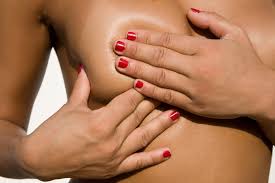
THE BREASTS
-
Consist of fatty and elastic tissues: The breasts are primarily composed of fatty tissue, which provides softness and insulation, and elastic tissue, which gives them flexibility and shape. These tissues together form the structure of the breasts, allowing them to change in size and shape as needed, such as during breastfeeding or hormonal fluctuations.
- They obtain their shape from muscles and connective tissue: Muscles and connective tissue within the breast provide support and maintain its shape. The muscles help in movements of the breast, while connective tissue, including ligaments, hold the breast tissue in place and give it structure.
- Breasts are formed during the 6th week of life in the mother’s womb and begin to grow during puberty: The development of breasts starts in the fetus around the sixth week of gestation. Initially, they consist of rudimentary ducts and mammary tissue. During puberty, under the influence of hormones like estrogen, the breasts undergo significant growth and development, including the formation of ducts, lobules, and increased fatty tissue.
- Before puberty, the breasts are flat: Prior to puberty, the breasts in both males and females are relatively undeveloped and flat. This is because the hormonal changes that drive breast development typically occur during puberty, initiating the growth of breast tissue.
-
By the end of puberty, they increase in size: As puberty progresses, the breasts undergo growth and development. They become larger and more rounded in shape due to the accumulation of fatty tissue, glandular tissue, and the development of ductal systems. This growth is influenced by hormonal changes and usually continues until the end of puberty or early adulthood.
Composition of the breast
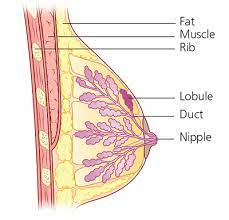
-
Milk glands that produce milk: These are specialized structures within the breast tissue responsible for producing milk. They are composed of clusters of cells called lobules, which contain alveoli where milk is produced during lactation.
- Ducts that transport milk from the milk glands to the nipple: Milk ducts are thin tubes that extend from the milk glands to the nipple. They serve as conduits for transporting milk from the lobules, where it is produced, to the nipple, where it is expelled during breastfeeding.
- Nipple: The nipple is the protruding part of the breast that contains numerous tiny openings of milk ducts. It serves as the outlet through which milk is delivered to the infant during breastfeeding.
- Areola (pink or brown pigmented region surrounding the nipple): The areola is the circular area of pigmented skin surrounding the nipple. It varies in color from pink to brown and contains small bumps called Montgomery’s tubercles. The areola plays a role in protecting and lubricating the nipple during breastfeeding.
- Connective tissue that surrounds the lobules and ducts: Connective tissue provides structural support to the breast and surrounds the lobules and ducts, helping to maintain their arrangement within the breast tissue.
- Fat: Adipose tissue, or fat, is present in the breasts and provides padding and support to the glandular tissue. It also contributes to the overall shape and size of the breasts.
-
Montgomery’s tubercles: These are small bumps on the areola’s surface, which contain glands that secrete an oily substance. This substance helps lubricate the nipple and areola, preventing dryness and cracking, especially during breastfeeding.
Breast Conditions
From puberty to menopause, breasts can be subject to a range of conditions, both benign and cancerous. Common conditions can range from cysts and fibroadenoma to mastitis and breast cancer, with varying levels of severity. It is important to be aware of the different types of conditions and to be informed of the best ways to take care of the important organs and to seek medical advice when necessary.
Breast cancer
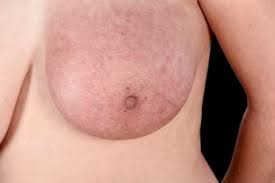
The abnormal multiplication of cells in the breast. Breast cancer is a type of cancer that affects the cells in the breast tissue. It can occur in both men and women, although it is far more common in women. It is the second leading cause of cancer-related deaths in women, after lung cancer. It can affect any part of the breast, including the skin, glands and surrounding tissue. Early detection and treatment can help improve chances of survival. Treatment options can include surgery, radiation therapy, chemotherapy, hormone therapy and targeted therapy.
Signs of breast cancer
An abnormal lump refers to a mass or growth in the breast tissue that feels different from the surrounding tissue and is not typical. This can indicate various conditions, including benign cysts or potentially cancerous tumors.
Bloody discharge from the nipple refers to any fluid coming from the nipple that is tinged with blood. While it may have benign causes such as injury or infection, it can also be a sign of breast cancer and should be evaluated by a healthcare professional.
Changes in the skin over the breasts can include redness, dimpling, puckering, or thickening of the skin. These changes may indicate an underlying issue such as inflammation, infection, or even breast cancer. Any noticeable changes should be promptly examined by a doctor.
Breast cyst
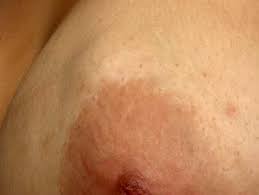
The development of sac filled with fluid in the breast. These are a common issue that can affect women of all ages. They are fluid-filled sacs that can form in the breast tissue and can range in size from small to large. It is not cancerous and can be drained. Although they are typically benign and do not cause any long-term health issues, however there are certain instances in which they can be indicative of a more serious condition. It is important to understand the symptoms and risks associated with cysts so that if any problems arise, they can be addressed quickly and effectively.
Breast fibroadenoma
This is a common benign breast condition that occurs when a tumor composed of glandular and fibrous tissue forms in the breast. It is usually found in women between the ages of 15 and 25, though it can occur at any age. Fibroadenomas are usually small round or oval lumps that can be felt and are usually mobile, with a rubbery consistency. They are usually painless and not cancerous but can become tender and painful if they become large. Treatment is usually not necessary, as fibroadenomas will often shrink or go away on their own, though if it is causing discomfort, the doctor may recommend surgical removal.
Fibrocystic breast disease
This is a common disorder affecting the breasts of many women of all ages. It is characterized by the presence of lumps, thickening, and tenderness in the breast tissue, often accompanied by breast pain. These changes often occur in response to hormonal fluctuations during the menstrual cycle. As a result, the breasts may become swollen, tender, or lumpy, particularly before menstruation. While fibrocystic changes are typically benign and do not increase the risk of breast cancer, they can cause discomfort or pain for some individuals. Regular breast self-exams and clinical evaluations can help monitor changes and ensure early detection of any concerning developments. While it is not a serious condition, it can be uncomfortable and may require treatment.
Highlights of fibrocystic breast disease
The breasts develop lumps and increase in size
Occurs during menstruation
May cause discomfort
Intraductal papilloma
Intraductal papilloma is a benign (non-cancerous) tumor that can develop in the milk ducts of the breast. It is most commonly diagnosed in women between the ages of 40 and 50, although it can occur in both men and women of any age. It typically presents as a single lump in the breast, but in some cases multiple tumors may be present. Intraductal papilloma is often associated with bloody nipple discharge, which may also be seen with other breast conditions. Treatment may be recommended depending on the individual case, such as surgical removal of the tumor or close monitoring.
Mass resembling a wart grows inside the vessels in the breast
May present as
- A leakage of clear or bloody fluid from the nipple
- Lump to the breast
Mastitis
Mastitis is a common condition that affects the breasts of many women worldwide. It is caused by a bacterial infection and can cause symptoms such as swelling, redness, pain, and fever. It occurs more frequently in breastfeeding mothers. Thus, it is important for women to be aware of the signs and symptoms of mastitis in order to seek prompt treatment. Treatment typically consists of antibiotics, rest, and supportive measures such as warm compresses and pain relief medications. Early treatment can help prevent the infection from becoming more severe.
Symptoms of mastitis
Swelling of the breast refers to an enlargement or puffiness of the breast tissue, often accompanied by discomfort or pain.
Redness indicates inflammation or irritation, typically visible as a reddish hue on the skin’s surface.
Pain in the breast can range from mild discomfort to sharp or throbbing sensations.
Increased warmth in the breast area may be a sign of inflammation or infection, causing the affected area to feel warmer to the touch compared to surrounding tissue.
Gynecomastia
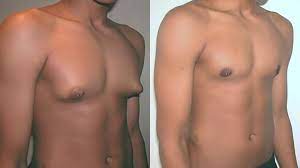
Gynecomastia is presented as an overdevelopment of the breast. It is a condition that affects the male species (men, boys and newborn babies), resulting in the enlargement of their breast tissue. It is caused by an imbalance of hormones, leading to an increase in estrogen and a decrease in testosterone. Symptoms of gynecomastia include swelling, tenderness, and pain in the chest area. Treatment options include lifestyle changes, medications, and surgery.
How breast conditions are diagnosed
Physical Exam
During a breast examination, healthcare providers will thoroughly inspect the breasts and armpits for any abnormalities, including:
- Lumps: They will assess the size, shape, and texture of any detected lumps, evaluating whether they are soft, firm, movable, or fixed.
- Changes in the skin: They will look for any changes in the skin texture, color, or appearance, such as dimpling, puckering, redness, or rash-like areas.
- Discharge from the nipples: They will check for any abnormal discharge from the nipples, such as bloody or milky discharge, which could indicate underlying issues.
- Swelling of the lymph nodes: They will feel for any swelling or enlargement of the lymph nodes in the armpits, as this could be a sign of breast cancer or infection.
Mammogram
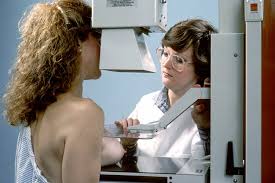
Mammogram is a type of imaging test used to detect changes in breast tissue. It is a low-dose X-ray of the breast and is widely used as a screening tool to detect breast cancer in its early stages. The test conducted with a special machine to compress each breast to identify lumps, cysts, or other changes in the breast, which can then be further evaluated with additional tests if necessary. The machine uses a small amount of radiation. It is an important tool for the early detection of breast cancer, and it should be part of a regular screening routine for many women.
Breast ultrasound
This is an imaging technique used to detect abnormalities such as lumps, cysts, tumors, and other structural changes in the breast. Breast ultrasound utilizes sound waves to create detailed images of the breast tissue, allowing for accurate and precise diagnosis of any abnormalities. It is a non-invasive, safe, and cost-effective way to diagnose breast health issues.
This test is conducted to visualize structure inside the breast
A special device attached to a screen will be placed on the breast to identify contents of the lump
MRI Scan
Magnetic Resonance Imaging (MRI) is a powerful medical imaging technique that uses a combination of powerful magnets and radio waves to create detailed images of the body. MRI scans can help diagnose a variety of medical conditions, from brain tumors to heart disease. Uses a special machine to obtain images of the internal structure of the breast and surrounding structures. MRI scans provide detailed images of the body in a non-invasive manner, allowing doctors to diagnose and treat a wide range of medical conditions with greater accuracy and precision.
Breast biopsy
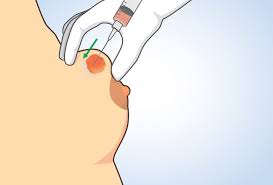
The collection of a sample of tissue from an abnormal area of the breast. A breast biopsy is a medical procedure used to remove a sample of tissue from the breast for diagnostic testing. This is typically done when a suspicious area is seen on a mammogram or ultrasound and the physician wants to examine it further. The tissue sample is then sent to a laboratory for analysis, and the results can help diagnose or rule out the presence of breast cancer. Depending on the size of the suspicious area, a biopsy can be done with a needle or with a larger sample of tissue removed during what is known as an open biopsy.
Ductogram
Ductogram (also known as a galactogram) is an imaging procedure used to diagnose breast diseases, such as lactational abnormalities, that cannot be seen with mammography or ultrasound. The procedure involves the insertion of a thin plastic tube into a duct in the nipple followed by the injection of a contrast dye into the breast to view the breast ducts. A series of X-ray images will be taken to identify any blockages or other abnormalities of the breast ducts. By examining the ducts, the doctor is able to identify and diagnose any underlying issues that may be causing the lactational abnormality, such as an obstruction, an infection or a benign tumor. Ductograms are a safe and effective tool for diagnosing breast conditions and are typically recommended when other imaging techniques have not been successful. This test helps identify the cause of bloody nipple discharge.
Breast Treatments
Lumpectomy
Lumpectomy is a type of breast cancer surgery that involves removing the cancerous tumor and a small amount of surrounding tissue. It is typically used when the cancer is found early, and the tumor is small and localized. The goal of the procedure is to remove the cancer and preserve as much of the breast tissue as possible. Lumpectomy is often used in conjunction with other treatments such as radiation and chemotherapy to help reduce the risk of recurrence.
Mastectomy
Mastectomy is a major surgery that involves the removal of one or both breasts to treat or prevent breast cancer. It is an effective way to reduce the risk of the cancer coming back or spreading to other parts of the body. Depending on the type of mastectomy, some breast tissue, lymph nodes, and other tissues may be removed as well. Recovery from a mastectomy may take several weeks, and post-surgery care is an important part of the process.
Axillary lymph node dissection
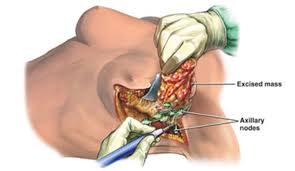
Axillary lymph node dissection (ALND) is a surgical procedure that is used to remove lymph nodes in the axilla (armpit) in order to stage and treat certain types of cancer. The procedure usually involves the removal of several lymph nodes and their surrounding fatty tissue. It is important to understand the risks and benefits of this procedure before making a decision to proceed. ALND can be used to diagnose, stage, and treat many types of cancer, including breast cancer, melanoma, and Hodgkin’s lymphoma. By removing the lymph nodes, the doctor can determine whether the cancer has spread to other areas of the body, and if so, the extent of the spread. ALND can also be used to treat cancer by removing the lymph nodes that contain cancer cells, preventing them from spreading to other parts of the body. Depending on the type of cancer, ALND may be the only option for treatment or may be used in combination with other treatments such as chemotherapy or radiation therapy.
Highlights of axillary lymph node dissection
Cancer cells may pass through the lymph nodes to affect the rest of the body
The lymph nodes in the armpit are removed
It helps to prevent the spread of cancer to the rest of the body
Chemotherapy
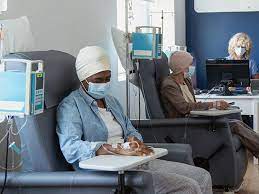
Chemotherapy is a type of cancer treatment that uses powerful drugs to kill cancer cells. It is used to shrink tumors, stop them from growing, or to reduce the chances that the cancer will return. Chemotherapy works by stopping or slowing the growth of cancer cells, which grow and divide quickly. It can be used as a standalone treatment or in combination with other treatments, such as surgery or radiation therapy.
Highlights of chemotherapy
The use of medication to destroy or reduce the size of cancer cells
Helps reduce the chance for the cancer cells to spread or return
The medication may be given to the patient as tablets or through the vein
Radiation therapy
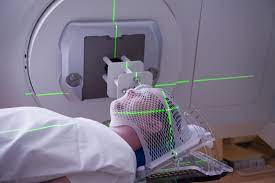
Radiation therapy is a form of treatment used to target and destroy cancer cells. It uses high energy x-rays or particles to kill cancer cells and shrink tumors. This type of therapy is used to treat many types of cancer, including lung, breast, prostate and head and neck cancers. It can also be used to relieve pain and other symptoms caused by cancer. Radiation therapy is usually an outpatient procedure and can be done in a hospital or a specialized treatment center. The treatment is typically administered in multiple sessions over a period of several weeks, allowing the radiation to target the cancer cells while minimizing damage to surrounding healthy tissue.
Highlights of radiation therapy
Uses radiation to destroy the remaining cancer cells
Often used after surgery
A special machine is used
Breast reconstruction
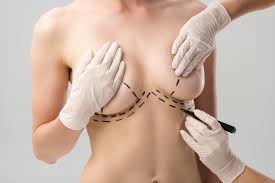
Breast reconstruction is a surgical procedure that can restore the shape, appearance, and size of a woman’s breast after mastectomy or injury. It involves using an implant or tissue from the person’s body to remake or restore the natural shape of the breast and the nipple-areola complex. Breast reconstruction is a complex process and can involve the use of a variety of techniques, including implants, autologous tissue reconstruction, and flap reconstruction. Depending on the patient’s individual needs and goals, the reconstructive surgeon will choose the technique or combination of techniques that best suits the patient. This procedure can provide improved body image, self-esteem, and quality of life for women who have undergone a mastectomy.
Antibiotics
Antibiotics are a type of medication that are used to fight infections caused by bacteria. When it comes to treating breast conditions, antibiotics can be an effective treatment option. Whether you’re dealing with abscesses, mastitis, or other breast infections, antibiotics can help reduce inflammation and fight off the infection-causing bacteria.
Breast augmentation
This is a popular cosmetic procedure that has helped many women achieve the look they desire. It involves surgically inserting a breast implant to increase the size or fullness of the breasts. Depending on the patient’s desired outcome, breast augmentation can be used to correct a variety of issues, from uneven breasts to post-pregnancy volume loss. This procedure also can be used to improve the overall shape of the breasts and create a more symmetrical look. With the help of a skilled plastic surgeon, patients can safely and effectively achieve their desired aesthetic results.
Highlights of breast augmentation
A surgical procedure used to insert artificial implants
Aim to increase the size of the breast
Breast reduction
This is a surgical procedure that is designed to reduce the size of overly large breasts. It is most commonly performed by removing excess fat, glandular tissue, and skin to achieve a more proportionate and aesthetically pleasing breast size. This type of procedure can also help with back, neck, and shoulder pain that can be caused by overly large breasts. In addition, breast reduction can help to improve posture and allow for more comfortable participation in physical activities.
Highlights of breast reduction
Aim to reduce the size of the breast
Helps relieve pain and pressure caused by the large size of the breast
Used for men with gynecomastia
Factors that determine the size and shape of the breasts
-
The person’s genes: Genetic factors play a significant role in determining the size and shape of a person’s breasts. Genes inherited from biological parents influence various aspects of breast development, including breast size, density, and shape.
- Weight: Body weight and composition can impact breast size and shape. Breasts contain fatty tissue, and changes in body weight can affect the amount of fat stored in the breasts, leading to fluctuations in size.
- Infection or illness: Certain medical conditions or infections can affect breast health and may influence breast size or shape. For example, inflammatory conditions or infections such as mastitis can cause swelling, pain, and changes in breast appearance.
- Exercise: Regular physical activity, including exercises targeting the chest muscles, can influence breast appearance to some extent. While exercise itself does not change breast size, it can affect the underlying muscle tone and overall body composition, which may impact the perceived shape of the breasts.
- Age: Age-related changes, such as hormonal fluctuations, skin elasticity, and loss of breast tissue density, can affect breast appearance over time. Breasts may naturally sag or lose volume with age due to factors such as gravity and hormonal changes associated with menopause.
-
Pregnancy and breastfeeding: Pregnancy and breastfeeding can cause significant changes in breast size, shape, and texture. During pregnancy, hormonal fluctuations prepare the breasts for lactation, leading to enlargement and increased sensitivity. Breastfeeding further impacts breast appearance as the breasts produce milk and undergo changes in size and shape to accommodate nursing. After breastfeeding, the breasts may return to their pre-pregnancy size and shape, but some changes may persist.
Montgomery’s tubercles
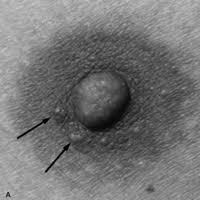
Montgomery’s tubercles are small, raised bumps located around the nipples of both females and males. These protrusions are caused by the expansion of the Montgomery glands, which are sebaceous glands located under the areola of the nipple. Montgomery’s tubercles are believed to help lubricate the nipple and areola, making it easier for a newborn baby to grasp and latch onto the breast while nursing. They can vary in size and may become more prominent during pregnancy.
Overview of Montgomery’s tubercles
Montgomery’s tubercles are small, raised bumps located around the areola, the dark area of the nipple. These protrusions are caused by the expansion of the Montgomery glands, which are sebaceous glands located under the areola of the nipple. Montgomery’s tubercles serve several important functions:
Oil glands that appear as small bumps around the areola (the dark area of the nipple)
These glands produce an oily substance that has antibacterial properties, helping to protect the nipples and surrounding skin from infection.
The oil secreted by Montgomery’s tubercles helps to keep the nipples moist and lubricated, reducing friction and discomfort, especially during breastfeeding.
By keeping the nipples and surrounding skin clean and protected, Montgomery’s tubercles help to minimize the risk of bacterial contamination of breast milk, ensuring its safety for the baby.
The lubricating oil helps to prevent chafing and irritation of the nipples during breastfeeding, enhancing comfort for both the mother and the baby.
They may naturally shrink or disappear over time, particularly after breastfeeding ceases or hormonal changes occur.
It’s essential not to attempt to pop or squeeze Montgomery’s tubercles, as this can lead to infection or injury. They should not cause pain or discomfort under normal circumstances.
Should not cause pain and discomfort to the person
Times when the Montgomery’s tubercles enlarge
-
Puberty: During puberty, hormonal changes can lead to breast development and changes in size and shape.
- Menstruation: Hormonal fluctuations during the menstrual cycle can cause temporary changes in breast size, tenderness, and sensitivity.
- Pregnancy: Pregnancy triggers hormonal changes that prepare the breasts for lactation, leading to increased size, tenderness, and changes in appearance.
- Stress: High levels of stress can affect hormone levels, potentially leading to changes in breast tissue and sensitivity.
- Hormonal imbalances: Disorders affecting hormone levels, such as polycystic ovary syndrome (PCOS) or thyroid disorders, can impact breast health and appearance.
- Breast cancer: This can cause changes in breast size, shape, and texture, though these changes are often accompanied by other symptoms.
- Weight changes: Fluctuations in weight, whether gain or loss, can affect the size and appearance of breasts due to changes in fat distribution.
- Medications: Certain medications, such as hormone therapies or antidepressants, may affect breast tissue and sensitivity as a side effect.
- Nipple stimulation: Direct stimulation of the nipples, whether sexual or non-sexual, can cause temporary changes in nipple size, sensitivity, and appearance.
- Clothing and bra selection: Wearing tight-fitting or ill-fitting bras or clothing can potentially impact blood circulation and breast tissue, though the effect is usually temporary.
-
Breastfeeding: Breastfeeding can lead to changes in breast size, shape, and sensitivity due to hormonal fluctuations and milk production.
THE NIPPLES
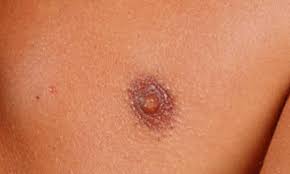
Nipples come in all shapes and sizes, and they are an essential part of the human body. They can vary significantly in color, size, and texture, depending on the individual. Nipples can be sensitive to touch and can be pleasurable to stimulate. They can also play an important role in breastfeeding and sexual arousal. Understanding the anatomy, physiology, and functions of nipples can help us better appreciate the unique features of our own bodies.
Some nipples can be:
- Bumpy: Some nipples have bumps due to Montgomery tubercles, which are oil-producing glands.
- Everted or erect: Nipples that protrude outward or become erect when stimulated or aroused.
- Inverted or withdrawn inwards: Nipples that retract or pull inward instead of protruding outward.
- Flat: Nipples that do not protrude or become erect, remaining relatively level with the surrounding areola.
- Hairy: Nipples that have hair follicles present on or around them.
- Protruding or standing erect: Nipples that stick out prominently from the areola, especially when stimulated.
- Puffy: Nipples and areolas that bulge or puff out, often seen during pregnancy or breastfeeding.
- Supernumerary or extra nipple: Additional nipples present on the body, sometimes referred to as “accessory nipples.”
- Unilateral inverted: One nipple inverted and the other everted, a condition where each nipple behaves differently.
Precautions with the nipples
Introducing nipples – the perfect solution for breastfeeding mums! Nipples provide a safe and secure way to feed your baby without the hassle of traditional bottles. With nipples, you can easily control the flow of milk and monitor your baby’s feeding progress. But there are important safety precautions to consider when using nipples. To ensure the safety of your baby, make sure to keep the nipples clean and replace them regularly. Following these simple tips can help ensure that your baby enjoys a safe and comfortable feeding experience.
- Avoid soap: Breastfeeding mothers should refrain from washing their nipples with soap as it can dry out the skin and cause irritation.
- Avoid disinfectants: Disinfectants should not be used on the breasts as they may contain harsh chemicals that can be harmful to the baby.
- Avoid drying or damaging substances: Substances such as alcohol-based products or harsh cleansers should be avoided as they can dry out or damage the delicate skin around the nipples.
- Use plain water: Instead of soap or disinfectants, it’s recommended to clean the nipples with plain water to maintain cleanliness without causing irritation.
- Wear a clean bra daily: Wearing a clean, comfortable bra daily can help maintain breast hygiene and prevent the accumulation of bacteria or other harmful substances.
INFECTION
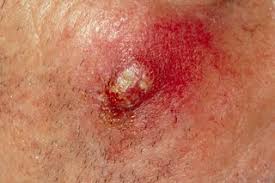
Infections are a common occurrence, especially in today’s world. While we may think of them as minor irritations, they can sometimes cause serious health problems if left untreated. It is important to understand the risks of infection and how to prevent them in order to stay healthy and safe.
Signs of complications
-
Redness or painful swelling around the nipple area: This could indicate inflammation or infection, such as mastitis, which commonly occurs during breastfeeding. It’s essential to address promptly to prevent complications.
- Itching or a rash: Itching or a rash around the nipple area may be caused by dermatitis, eczema, or an allergic reaction to certain substances. It could also be a sign of an underlying skin condition that requires attention.
- Discharge in a non-breastfeeding person: Any nipple discharge in someone who is not breastfeeding should be evaluated by a healthcare professional. It could be benign, such as hormonal fluctuations, or it could indicate an underlying issue like an infection or breast cancer.
- Pus draining from the nipple: Pus drainage suggests an infection, such as a breast abscess or mastitis. It requires immediate medical attention to prevent further complications.
- Changes in appearance around the nipple area: Changes in the skin texture, color, or contour around the nipple should be examined by a healthcare provider. These changes could indicate various conditions, including Paget’s disease of the breast or inflammatory breast cancer.
- Hard lump on the breast: A hard lump in the breast could be a sign of a benign condition like a fibroadenoma or a more serious issue like breast cancer. It’s crucial to have any new or unusual lumps evaluated by a healthcare professional.
- Dimpling, or an “orange peel texture,” on the breast: Dimpling or a texture resembling an orange peel on the breast skin could be a sign of inflammatory breast cancer. This type of cancer is aggressive and requires prompt medical attention.
- Changes in the shape or size of the nipple: Changes in the shape or size of the nipple, such as inversion or flattening, may indicate an underlying issue. It could be benign, but it’s essential to have it checked by a healthcare provider.
- Enlarged lymph nodes in the armpit: Enlarged lymph nodes in the armpit may suggest an infection or, rarely, breast cancer. It’s crucial to have them evaluated by a healthcare professional.
- Unplanned weight loss: Unexplained weight loss can sometimes be a symptom of advanced breast cancer. While weight loss can have many causes, if it occurs along with other breast-related symptoms, it should be investigated further.
- Difference in the shape or size of one breast: A noticeable difference in the size or shape of one breast compared to the other could indicate various conditions, including benign breast changes, hormonal fluctuations, or breast cancer. It’s important to have any significant asymmetry evaluated by a healthcare provider.
-
Discharge from the nipple: Nipple discharge can be normal in some cases, such as during pregnancy or breastfeeding. However, if the discharge is persistent, spontaneous, bloody, or occurs in a non-pregnant, non-breastfeeding individual, it should be evaluated by a healthcare provider to rule out any underlying issues, including infection or breast cancer.
When to seek urgent medical care
It is important to know when to seek urgent medical care, as delaying appropriate treatment can lead to further health complications. If you experience any of the following symptoms, you should seek medical help immediately. If you have any doubts about whether you should seek medical care, it is always better to err on the side of caution and consult with your doctor.
Unexpected tenderness or soreness to the breast
Mysterious redness or bruising
Abnormal or bloody nipple discharge
Lumps or swelling in the breast tissue particularly if they are new or different from usual
Unexpected change, such as a raised nipple becoming retracted
Signs of complications
Disclaimer: The information provided in this content is for general informational purposes only. It is not intended as medical or healthcare advice, diagnosis, or treatment. Always seek the advice of a qualified healthcare professional with any questions you may have regarding a medical condition or healthcare decisions.

